Influence of Carbide Morphology on the Deformation and Fracture Mechanisms of Spheroidized 14CrMoR Steel
Abstract
:1. Introduction
2. Materials and Experimental Procedures
2.1. Materials and Accelerated Spheroidization Experiment
2.2. In Situ Tensile Characterization
3. Results and Discussion
3.1. The Morphological Evolution of Carbides During Spheroidization
3.2. The Evolution of Mechanical Properties and in situ Tensile Characterization
4. Conclusions
- (1)
- Under the tensile load, the deformation and crack initiation started in the ferrite matrix in both the as-received and completely spheroidized 14Cr1MoR steel samples.
- (2)
- With the increase in strain, the high-strength ferrite/pearlite interface inhibited the movement of slip bands. The concentration of stress at the crack tip cracked the ferrite/pearlite interface and facilitated crack propagation along the ferrite/pearlite interface.
- (3)
- In the completely spheroidized 14Cr1MoR steel, the slip bands were no longer interrupted by ferrite at the grain boundary, implying that the slip bands bypassed the grain boundary carbides and traversed through the ferrite boundaries. Therefore, the dislocations were more easily produced in ferrite than pearlite. Moreover, micro-cracks were formed by micro-void coalescence and grain boundary carbide fractures, which connected with the main crack and completed the crack propagation.
- (4)
- The carbide morphology of the completely spheroidized 14Cr1MoR steel facilitated the dislocation and propagation of the cracks, which led to inferior mechanical properties. The fracture morphology of the as-received 14Cr1MoR steel changed from a lamellar/dimpled morphology to a dimple-dominant morphology after spheroidization damage.
Author Contributions
Funding
Conflicts of Interest
References
- Al-Abbasi, F.M. Micromechanical modeling of ferrite-pearlite steels. Mater. Sci. Eng. A 2010, 527, 6904–6916. [Google Scholar] [CrossRef]
- Bhadeshia, H.K.D.H. Steels for bearings. Prog. Mater. Sci. 2012, 57, 268–435. [Google Scholar] [CrossRef]
- Yasniy, O.; Vuherer, T.; Yasniy, V.; Sobchak, A.; Sorochak, A. Mechanical behaviour of material of thermal power plant steam superheater collector after exploitation. Eng. Fail. Anal. 2013, 27, 262–271. [Google Scholar] [CrossRef]
- Ostash, O.P.; Kondyr, A.I.; Vol’demarov, O.V.; Hladysh, P.V.; Kurechko, M.V. Structural microdamageability of steels of the steam pipelines of thermal power plants. Mater. Sci. 2009, 45, 340–349. [Google Scholar] [CrossRef]
- Dzioba, I. Failure assessment analysis of pipelines for heat and power generating plants according to the SINTAP procedures. Int. J. Press. Vessel. Pip. 2005, 82, 787–796. [Google Scholar] [CrossRef]
- Qu, Z.; Mcmahon, C.J. The Effects of Tempering Reactions on Temper Embrittlement of Alloy Steels. Metall. Trans. A 1983, 14, 1101–1108. [Google Scholar] [CrossRef]
- Xu, H.; Huang, X.K.; Yang, Z.; Pan, J.T. Property changes of 12Cr1MoV with 10CrMo910 main steam piping after long-term high-temperature service. Eng. Fail. Anal. 2003, 10, 245–250. [Google Scholar] [CrossRef]
- Bose, S.C.; Reddy, K.S.; Reddy, G.J.; Singh, K.; Sarma, D.S. Effect of service-simulated aging on the microstructure and properties of casing casting steel (1CrMoV) vis-à-vis, remnant life assessment. Metall. Mater. Trans. A 2003, 34, 1265–1274. [Google Scholar] [CrossRef]
- Romaniv, O.N.; Tkach, A.N.; Dzioba, I.R.; Simin’kovich, V.N.; Islamov, A.A. Effect of long-term thermomechanical treatment on the crack resistance of 12Kh1MF steel. Mater. Sci. 1989, 25, 202–208. [Google Scholar] [CrossRef]
- Berezina, T.G.; Borodina, é.R.; Ashikhmina, L.A. Effect of brief heating on resistance to fracture of steel 12Kh1MF. Met. Sci. Heat Treat. 1975, 3, 188–190. [Google Scholar] [CrossRef]
- Zhao, Q.H.; Jiang, B.; Wang, J.M. Pearlite spheroidization mechanism and lifetime prediction of 12Cr1MoV steel used in power plant. In Proceedings of the 4th Annual International Conference on Material Science and Engineering (ICMSE 2016), Guangzhou, China, 17–19 June 2016; Atlantis Press: Paris, France, 2016; pp. 195–201. [Google Scholar]
- Haque, M.A.; Saif, M.T.A. In-situ tensile testing of nano-scale specimens in SEM and TEM. Exp. Mech. 2002, 42, 123–128. [Google Scholar] [CrossRef]
- Liu, W.; Long, L.; Ma, Y.; Wu, L. Microstructure evolution and mechanical properties of Mg/Al diffusion bonded joints. J. Alloys Compd. 2015, 643, 34–39. [Google Scholar] [CrossRef]
- Chris, R.; Benjamin, B.; Arvin, A. In Situ Mechanical Testing Techniques for Real-Time Materials Deformation Characterization. JOM 2016, 68, 136–142. [Google Scholar]
- Mušálek, R.; Kovářík, O.; Matějíček, J. In-situ observation of crack propagation in thermally sprayed coatings. Surf. Coat. Technol. 2010, 205, 1807–1811. [Google Scholar] [CrossRef]
- Agarwal, H.; Gokhale, A.M.; Graham, S.; Horstemeyer, M.F. Void growth in 6061-aluminum alloy under triaxials stress state. Mater. Sci. Eng. A 2003, 341, 35–42. [Google Scholar] [CrossRef]
- Xu, Z.; Ma, Z.; Yan, J.; Zhang, Y.; Zhang, X. Strain field and fracture behavior of Ti/Al dissimilar alloy joint under in situ tensile test. Acta Metall. Sin. 2016, 52, 1403–1412. [Google Scholar]
- Hémery, S.; Nait-Ali, A.; Villechaise, P. Combination of in-situ SEM tensile test and FFT-based crystal elasticity simulations of Ti-6Al-4V for an improved description of the onset of plastic slip. Mech. Mater. 2017, 109, 1–10. [Google Scholar] [CrossRef]
- Wang, W.; Liu, T.; Cao, X.; Lu, Y.; Shoji, T. In-situ observation on twin boundary evolution and crack initiation behavior during tensile test on 316L austenitic stainless steel. Mater. Charact. 2017, 132, 169–174. [Google Scholar] [CrossRef]
- Lee, Y.W.; Son, Y.I.; Lee, S.J. Microstructure and mechanical properties of spheroidized D6AC steel. Mater. Sci. Eng. A 2013, 585, 94–99. [Google Scholar] [CrossRef]
- Li, L.; Yang, W.; Sun, Z. Microstructure Evolution of a Pearlitic Steel during Hot Deformation of Undercooled Austenite and Subsequent Annealing. Metall. Mater. Trans. A 2008, 39, 624–635. [Google Scholar] [CrossRef]
- Yong, L.T.; Kraft, R.W. Mechanisms of Pearlite Spheroidization. Metall. Trans. A 1987, 18, 1403–1414. [Google Scholar]
- Saha, A.; Mondal, D.K.; Maity, J. Effect of cyclic heat treatment on microstructure and mechanical properties of 0.6 wt% carbon steel. Mater. Sci. Eng. A 2010, 527, 4001–4007. [Google Scholar] [CrossRef]
- Guo, E.Y.; Wang, M.Y.; Jing, T.; Chawla, N. Temperature-dependent mechanical properties of an austenitic–ferritic stainless steel studied by in situ, tensile loading in a scanning electron microscope (SEM). Mater. Sci. Eng. A 2013, 580, 159–168. [Google Scholar] [CrossRef]
- Dobrzański, J.; Hernas, A. Cerrelation between phase composition and life-time of 1Cr0.5Mo steels during long-term service at elevated temperatures. J. Mater. Process. Technol. 1995, 53, 101–108. [Google Scholar] [CrossRef]
- Afrouz, A.; Collins, M.J.; Pilkington, R. Microstructural examination of 1Cr-O-5Mo steel during creep. Met. Technol. 1983, 10, 461–463. [Google Scholar] [CrossRef]
- Fan, L. Analysis on the deformation and fracture behavior of carbon steel by in situ tensile test. Int. Miner. Metall. Mater. 2006, 13, 504–507. [Google Scholar]

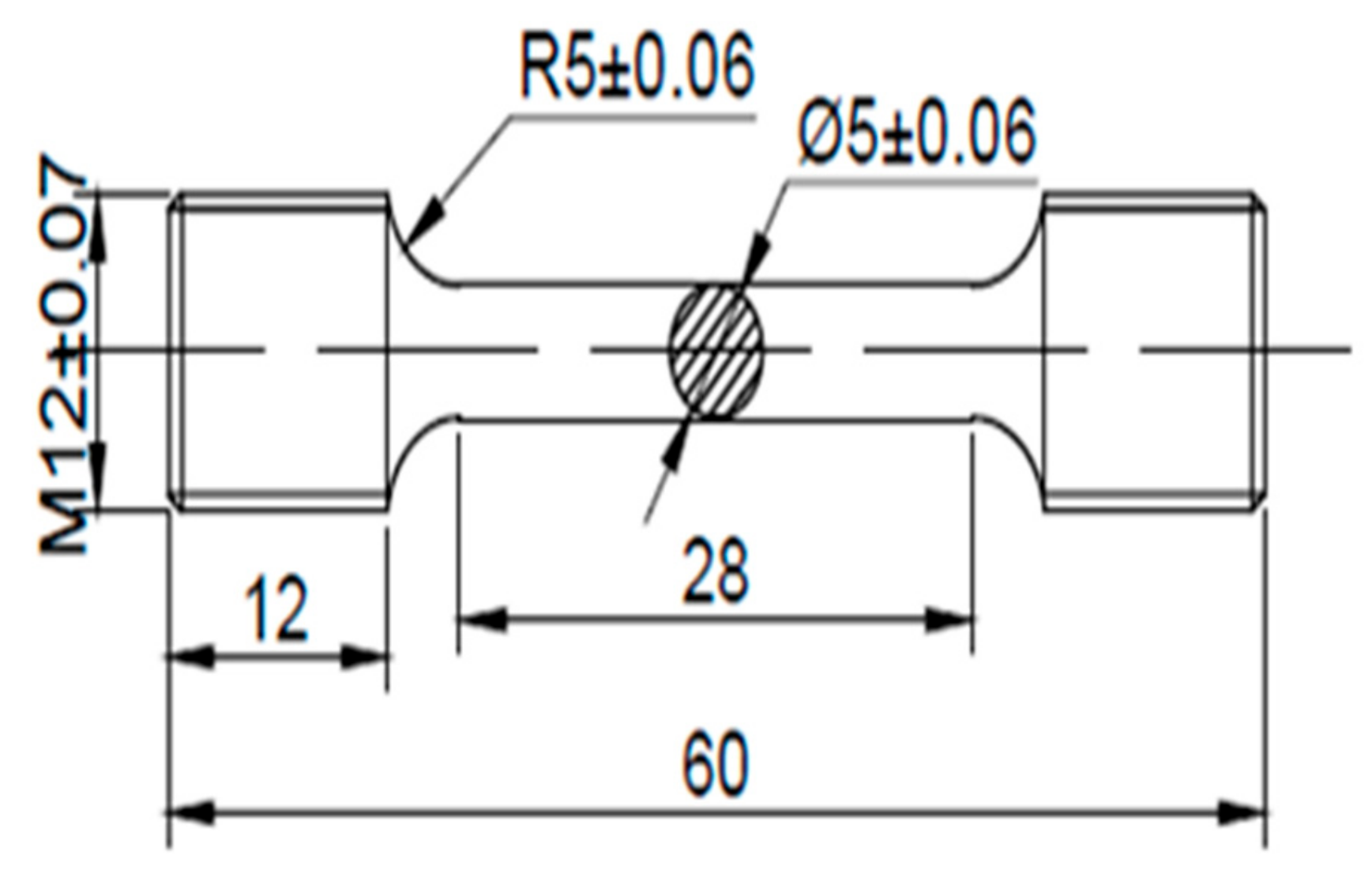
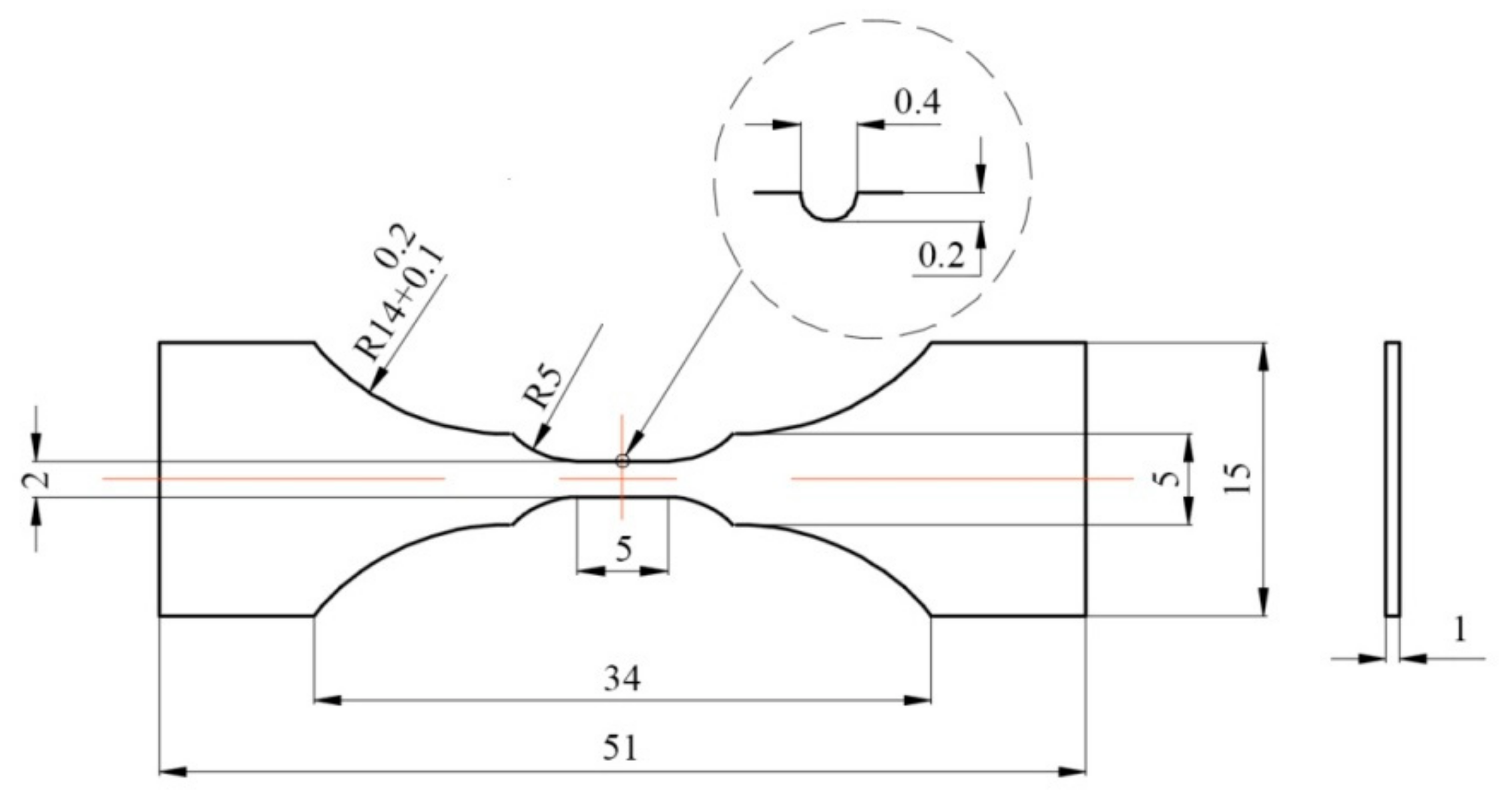


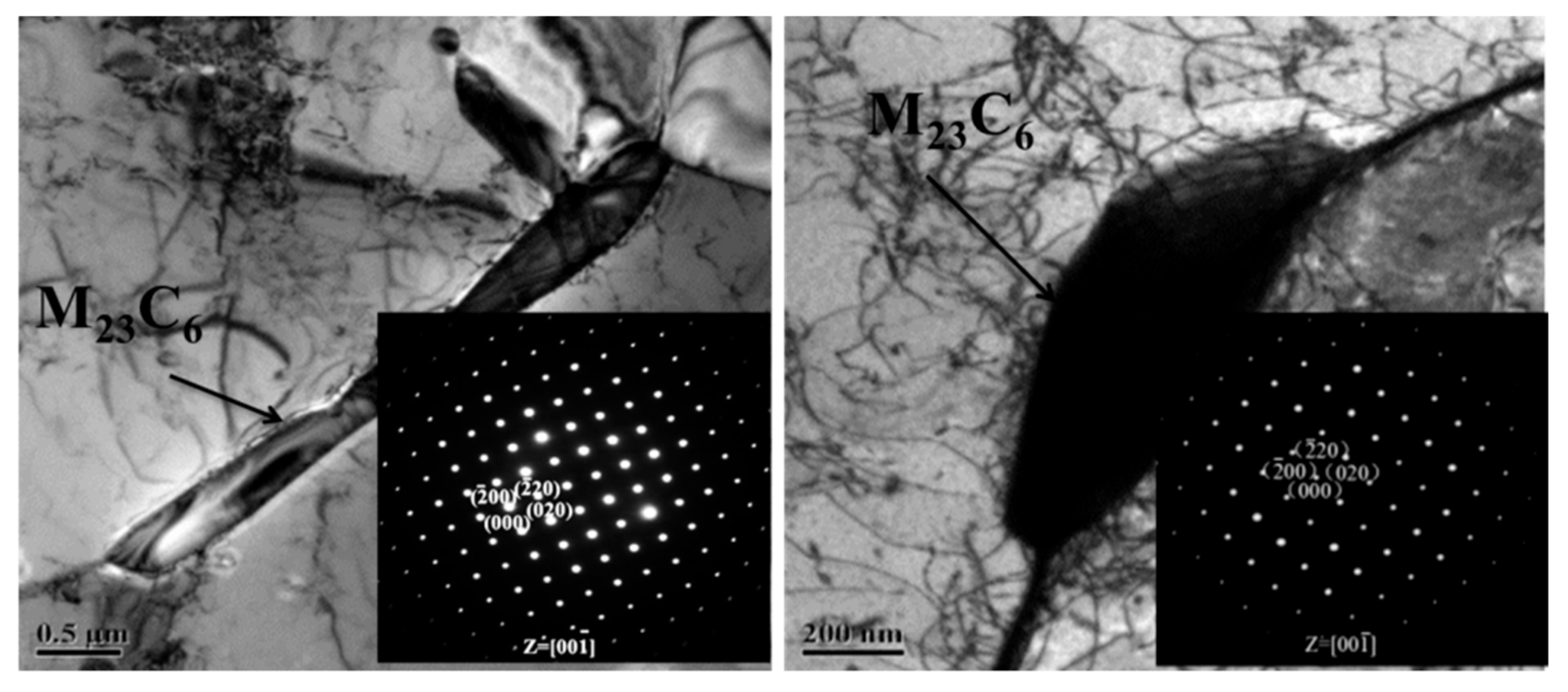
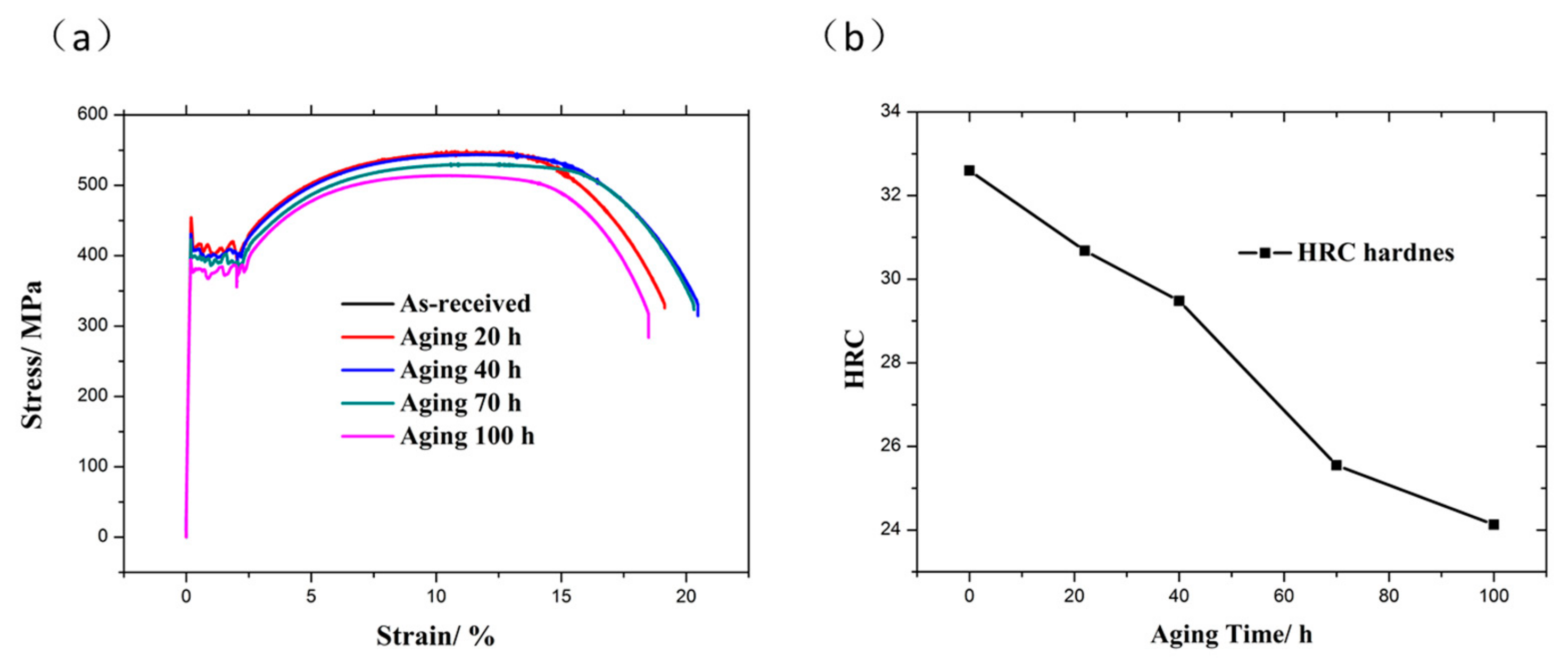
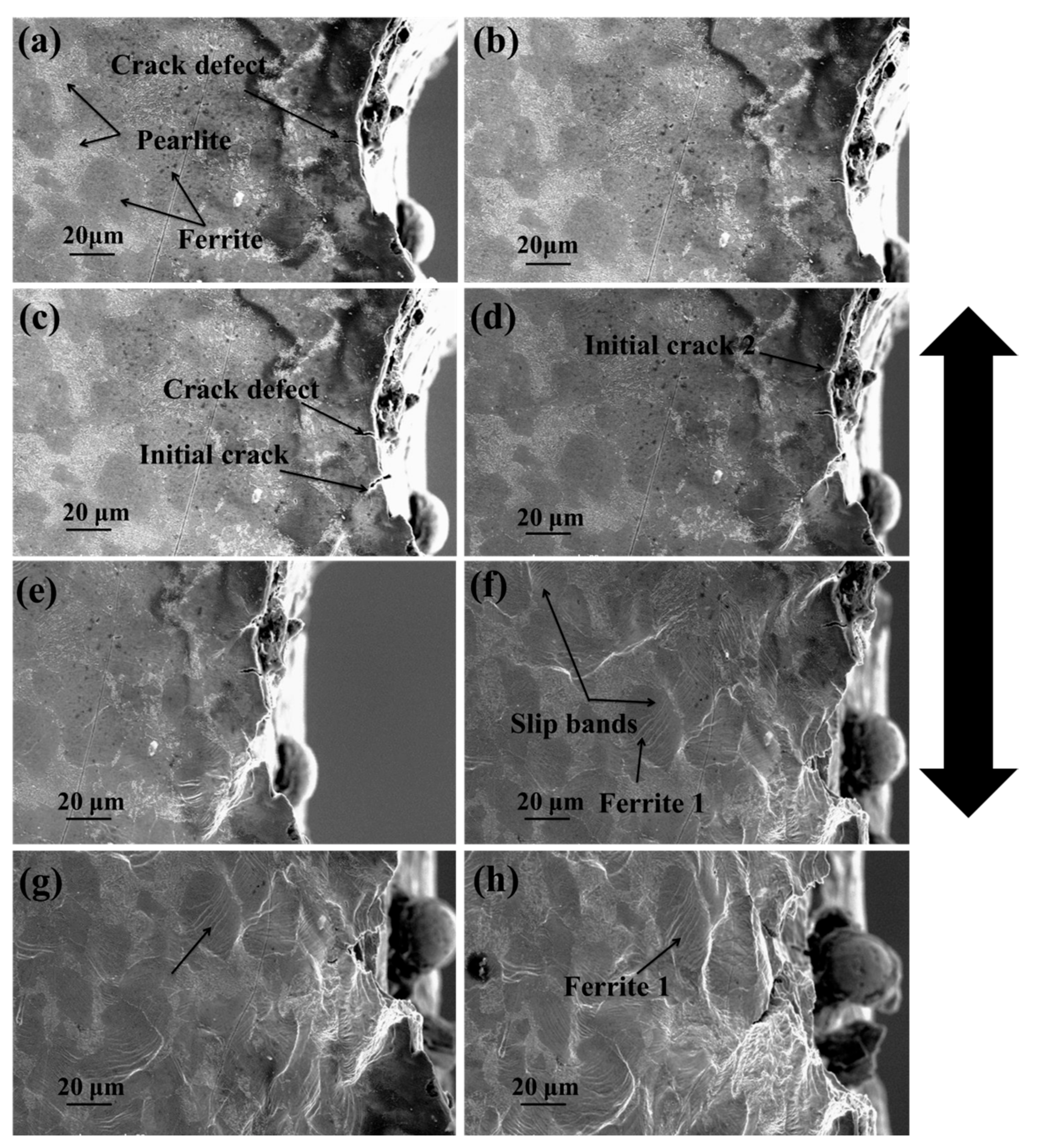
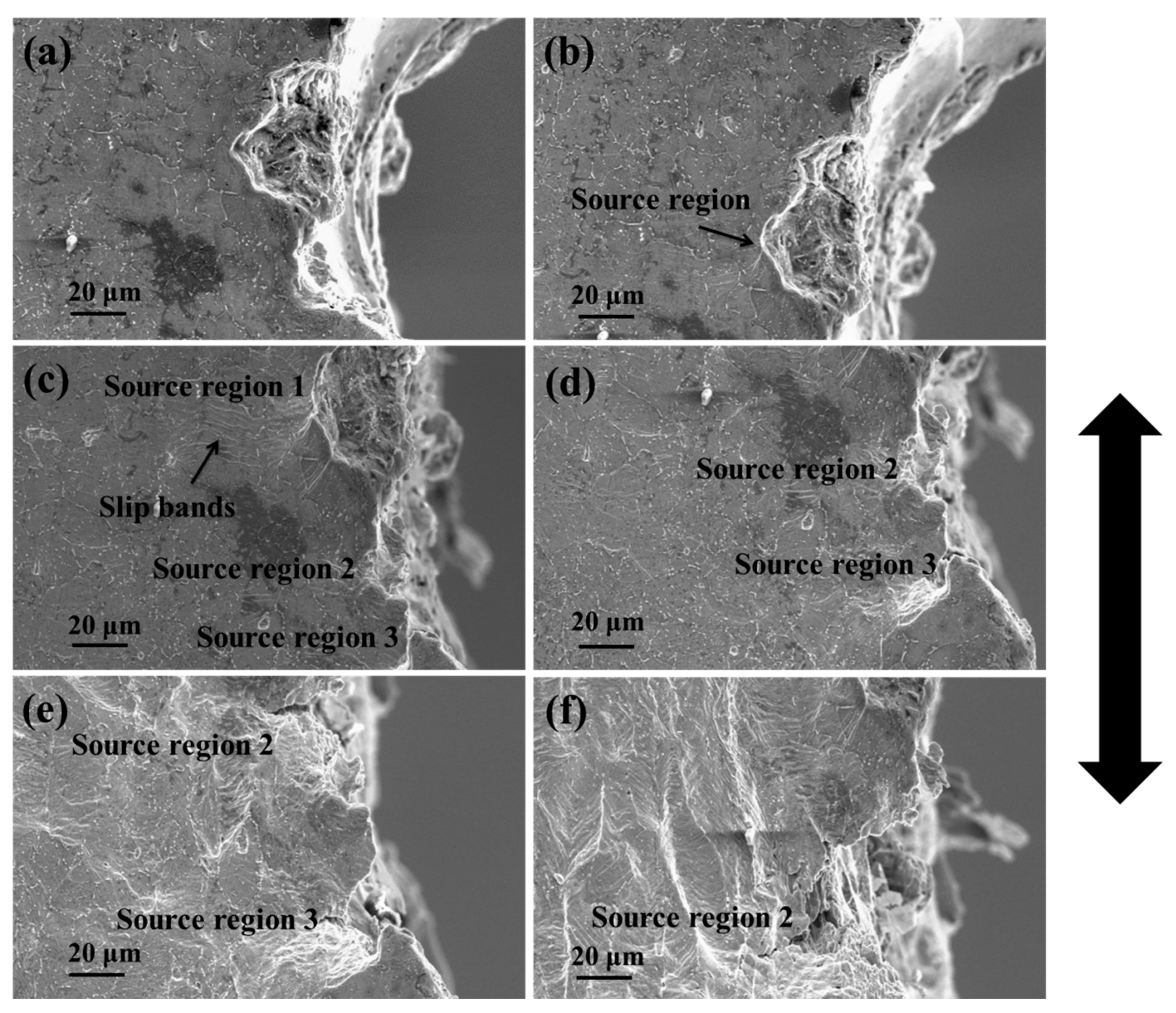

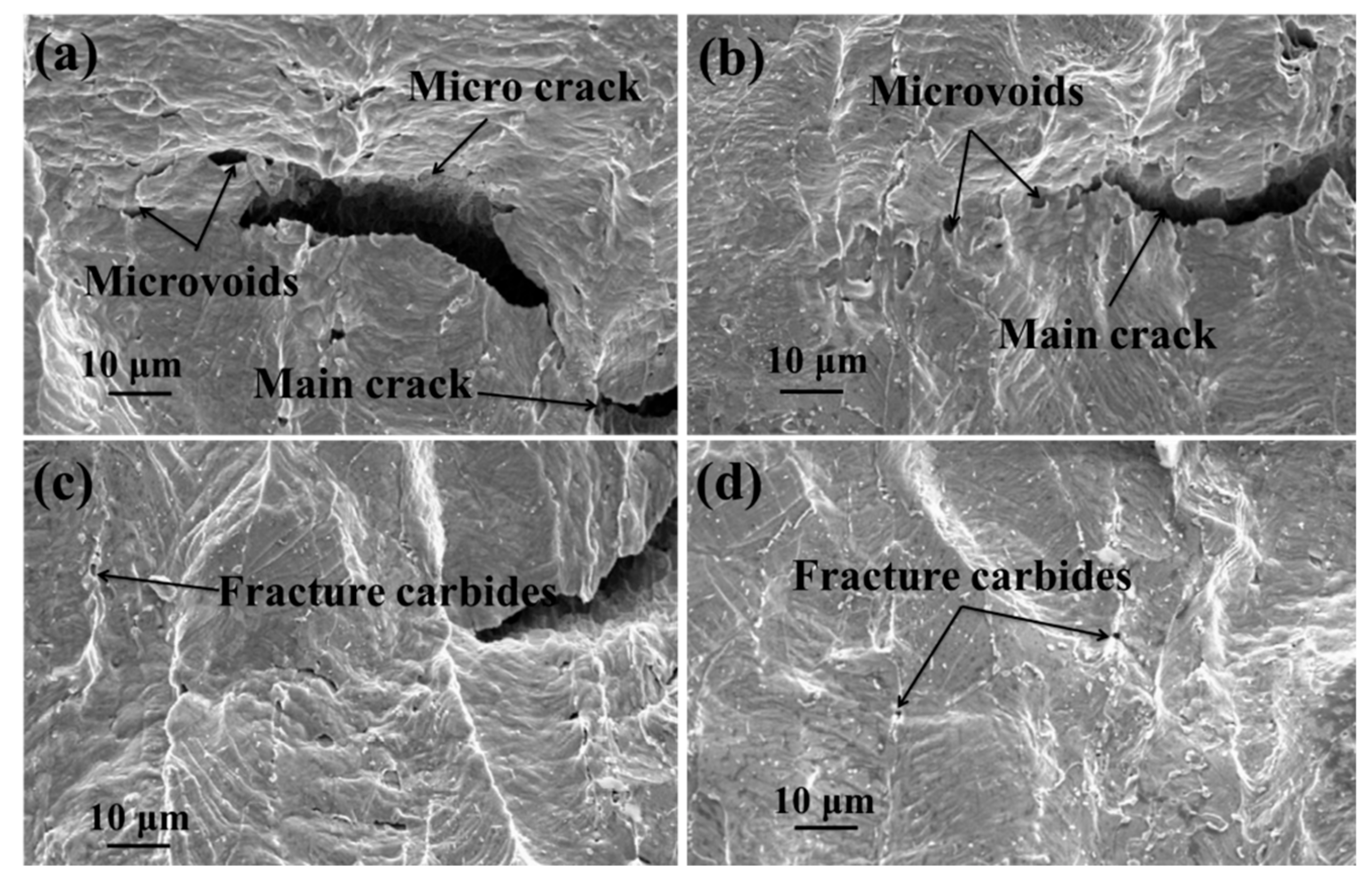

| Elements | C | Ni | Mn | Cr | Mo | Fe |
|---|---|---|---|---|---|---|
| Composition (wt%) | 0.16 | 0.022 | 0.48 | 1.2 | 0.47 | Bal. |
© 2019 by the authors. Licensee MDPI, Basel, Switzerland. This article is an open access article distributed under the terms and conditions of the Creative Commons Attribution (CC BY) license (http://creativecommons.org/licenses/by/4.0/).
Share and Cite
Wang, S.; Cao, L.; Zhang, Z. Influence of Carbide Morphology on the Deformation and Fracture Mechanisms of Spheroidized 14CrMoR Steel. Metals 2019, 9, 1221. https://doi.org/10.3390/met9111221
Wang S, Cao L, Zhang Z. Influence of Carbide Morphology on the Deformation and Fracture Mechanisms of Spheroidized 14CrMoR Steel. Metals. 2019; 9(11):1221. https://doi.org/10.3390/met9111221
Chicago/Turabian StyleWang, Shifu, Luowei Cao, and Zheng Zhang. 2019. "Influence of Carbide Morphology on the Deformation and Fracture Mechanisms of Spheroidized 14CrMoR Steel" Metals 9, no. 11: 1221. https://doi.org/10.3390/met9111221




